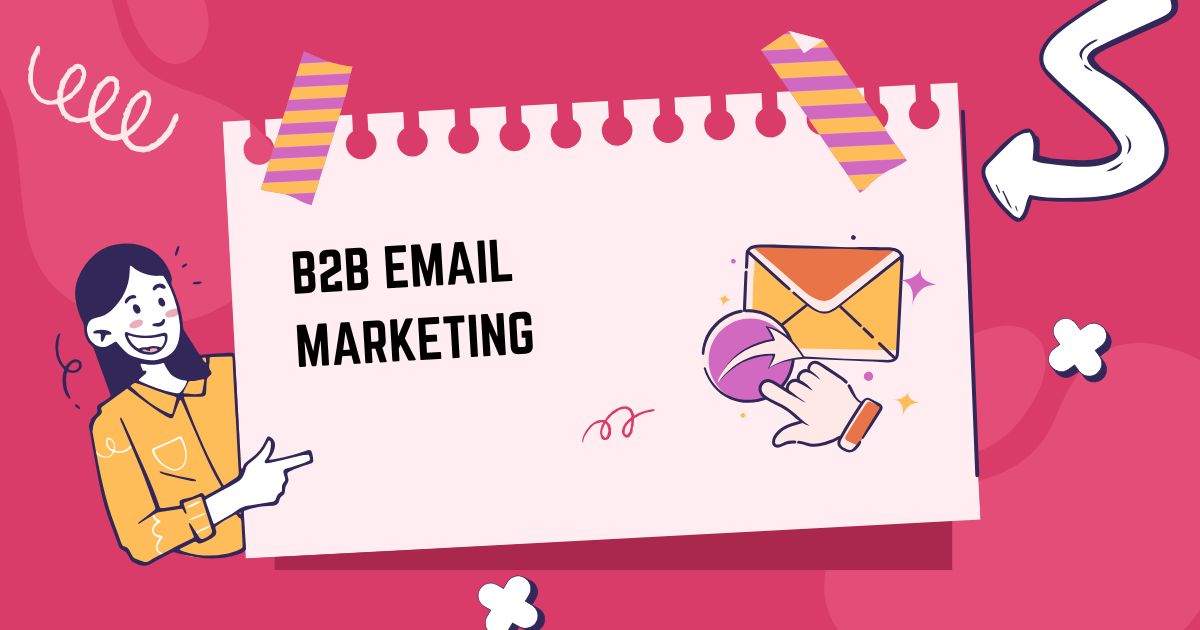
Email marketing remains one of the most powerful tools in the B2B marketer’s arsenal, delivering an average ROI of $42 for every dollar spent. Yet many businesses struggle to cut through the noise of crowded inboxes and create campaigns that truly resonate with their professional audience.
The difference between successful B2B email marketing and campaigns that fall flat often comes down to understanding your audience’s unique needs, crafting compelling content that speaks to business challenges, and implementing strategic approaches that nurture relationships rather than just push products.
This comprehensive guide will walk you through proven strategies, best practices, and actionable tactics to transform your B2B email marketing from mediocre to exceptional. You’ll discover how to build targeted lists, write subject lines that get opened, create content that drives action, and measure what matters most for sustained growth.
Understanding Your B2B Email Marketing Audience
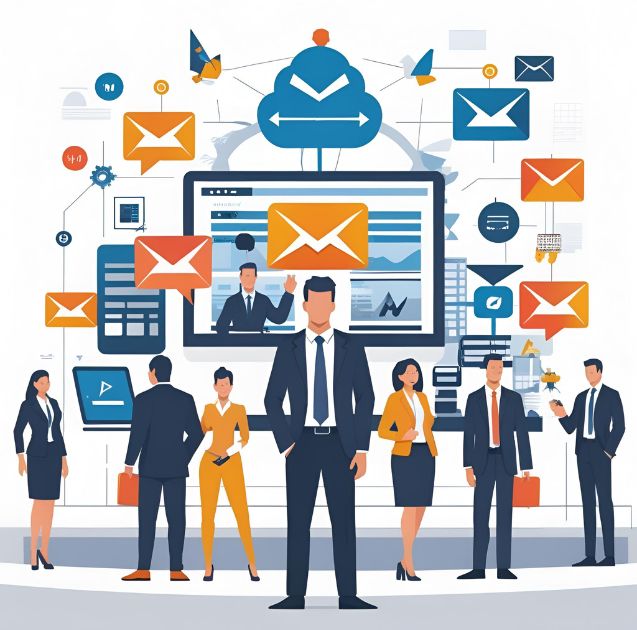
B2B email marketing differs significantly from B2C approaches because you’re targeting decision-makers, influencers, and stakeholders within organizations. These professionals receive dozens of promotional emails daily, making them more selective about what they open and engage with.
Your audience consists of busy executives, managers, and specialists who value their time highly. They’re looking for solutions to specific business problems, insights that help them make better decisions, and content that demonstrates clear value to their organization.
Research your target segments thoroughly. Understand their pain points, goals, and preferred communication styles. A CFO’s priorities differ vastly from those of a marketing manager, and your email content should reflect these distinctions.
Consider the buying process in B2B environments, which typically involves multiple stakeholders and longer decision cycles. Your email campaigns need to nurture relationships over time, providing value at each stage of the buyer’s journey.
Building and Segmenting Your Email List
Quality trumps quantity when it comes to B2B email lists. A smaller list of engaged, relevant contacts will outperform a large list of uninterested recipients every time.
Start by implementing lead magnets that attract your ideal prospects. White papers, industry reports, webinars, and exclusive tools work well for B2B audiences because they provide immediate professional value. Make sure your lead magnets address specific business challenges your target audience faces.
Use progressive profiling to gather additional information about your subscribers over time. Instead of asking for extensive details upfront, collect key data points gradually through subsequent interactions. This approach reduces form abandonment while building detailed prospect profiles.
Segment your list based on factors that matter to your business: company size, industry, job role, buying stage, and engagement level. The more specific your segments, the more personalized and relevant your messaging can become.
Don’t forget about data hygiene. Regularly clean your list by removing inactive subscribers, updating contact information, and ensuring compliance with regulations like GDPR and CAN-SPAM.
Crafting Compelling Subject Lines
Your subject line determines whether your email gets opened or deleted. B2B professionals scan their inboxes quickly, so your subject line must immediately communicate value and relevance.
Focus on clarity over cleverness. While creative subject lines can work, B2B audiences generally respond better to straightforward messaging that clearly states the email’s purpose or benefit. “Q3 Industry Report: Key Trends Affecting Your Sector” works better than vague teaser copy.
Use numbers and specifics when possible. Subject lines like “5 Ways to Reduce Operational Costs” or “Increase Productivity by 23%” provide concrete expectations and appeal to the data-driven nature of business decision-makers.
Personalization goes beyond just inserting the recipient’s name. Reference their company, industry, or recent achievements when relevant. “How [Company Name] Can Reduce Software Costs” feels more targeted than generic messaging.
Test different approaches systematically. Try varying length, tone, urgency levels, and personalization elements to discover what resonates best with your specific audience segments.
Creating Valuable Email Content
B2B email content must deliver genuine business value to earn attention and engagement. Your emails should educate, inform, or solve problems rather than simply promoting your products or services.
Lead with insights your audience can’t easily find elsewhere. Share industry data, expert predictions, or case studies that provide actionable intelligence. When you consistently deliver valuable content, recipients begin to anticipate and prioritize your emails.
Structure your content for busy professionals who scan rather than read deeply. Use clear headings, bullet points, and short paragraphs. Front-load the most important information and make key takeaways easy to identify at a glance.
Include social proof strategically. Customer success stories, testimonials, and usage statistics build credibility and help prospects envision similar outcomes for their organizations. Make these elements specific and quantifiable whenever possible.
Balance promotional and educational content carefully. Follow the 80/20 rule: 80% valuable, non-promotional content and 20% direct promotion. This approach builds trust and positions your company as a helpful resource rather than just another vendor.
Optimizing Email Design and Format
B2B emails should prioritize functionality and clarity over flashy design elements. Your recipients are primarily interested in consuming information quickly and taking action when appropriate.
Keep designs clean and professional. Use plenty of white space, readable fonts, and a logical information hierarchy. Your email should look polished without appearing overly designed or distracting from the core message.
Ensure mobile optimization since many B2B professionals check emails on their phones throughout the day. Test your emails across different devices and email clients to ensure consistent rendering and functionality.
Make your call-to-action buttons prominent and specific. Instead of generic “Click Here” buttons, use action-oriented text like “Download Report,” “Schedule Demo,” or “View Case Study.” Position CTAs strategically throughout longer emails, not just at the end.
Consider the preview text that appears after your subject line in most email clients. This additional real estate can reinforce your value proposition or provide additional context that encourages opens.
Automation and Email Sequences

Email automation allows you to deliver timely, relevant messages at scale while nurturing prospects through extended buying cycles typical in B2B environments.
Develop welcome sequences for new subscribers that introduce your company, set expectations, and provide immediate value. A well-crafted welcome series can significantly improve long-term engagement and conversion rates.
Create nurture sequences based on specific actions or behaviors. When someone downloads a white paper about cybersecurity, follow up with related content about implementation strategies, case studies, or complementary resources.
Implement lead scoring to trigger different automated sequences based on engagement levels and buying signals. Highly engaged prospects might receive more detailed product information, while less engaged contacts get broader educational content.
Use automation to re-engage inactive subscribers before removing them from your list. A targeted re-engagement campaign can win back valuable contacts and provide insights into why engagement dropped.
Measuring and Analyzing Performance
Track metrics that align with your business objectives rather than vanity metrics that don’t drive meaningful outcomes. While open rates and click-through rates provide useful insights, focus on metrics like lead quality, sales attribution, and customer lifetime value.
Monitor deliverability closely since B2B emails face stricter spam filtering. Track bounce rates, spam complaints, and sender reputation scores. Poor deliverability undermines all other optimization efforts.
Analyze performance by segment to identify which audiences respond best to different types of content and messaging approaches. Use these insights to refine your segmentation strategy and content development.
Test continuously but focus on elements that could significantly impact performance. Subject lines, send times, content formats, and CTA placement are all worth testing systematically.
Set up proper attribution tracking to understand how email marketing contributes to your sales pipeline. Many B2B conversions happen offline or through multiple touchpoints, so work with your sales team to establish clear tracking processes.
Advanced B2B Email Marketing Strategies
Account-based marketing (ABM) approaches can significantly improve B2B email effectiveness by focusing on high-value target accounts. Create highly personalized campaigns for specific companies, addressing their unique challenges and referencing their business context.
Leverage intent data to time your emails more effectively. When prospects research topics related to your solutions, they’re more likely to engage with relevant email content. Integrate intent data sources with your email platform to trigger timely campaigns.
Collaborate closely with your sales team to align email marketing with sales processes. Share lead scoring data, provide sales-ready content for follow-up, and ensure consistent messaging across all touchpoints.
Experiment with interactive elements like polls, surveys, or embedded videos to increase engagement. B2B audiences appreciate opportunities to provide input or access information without leaving their inbox.
Taking Your B2B Email Marketing to the Next Level
Effective B2B email marketing requires a strategic approach that prioritizes value creation, audience understanding, and continuous optimization. Success comes from treating email as a relationship-building tool rather than just a promotional channel.
Start by auditing your current email marketing efforts against the strategies outlined in this guide. Identify the biggest gaps between your current approach and best practices, then prioritize improvements based on potential impact and implementation difficulty.
Remember that B2B email marketing is a long-term strategy. Focus on building trust and demonstrating expertise consistently rather than expecting immediate conversions. The relationships you nurture through thoughtful email marketing will ultimately drive sustainable business growth and customer loyalty.


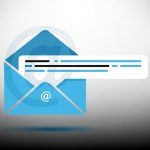
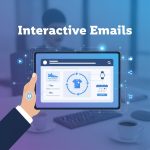


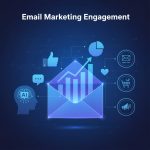
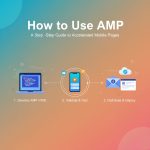





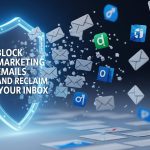
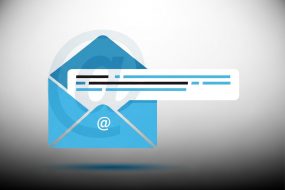
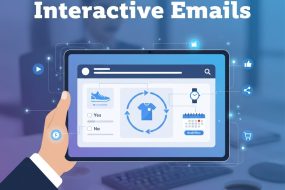


No Comments